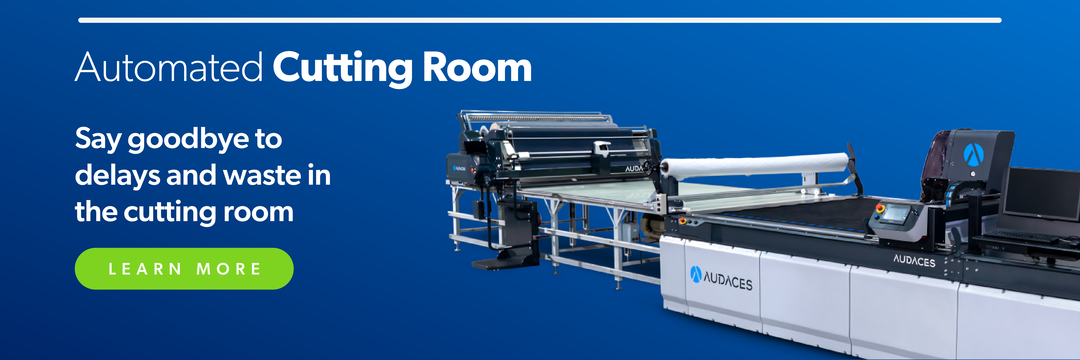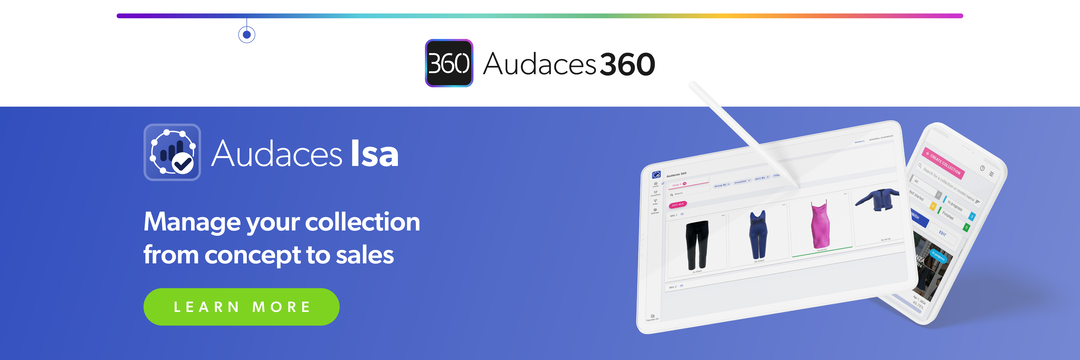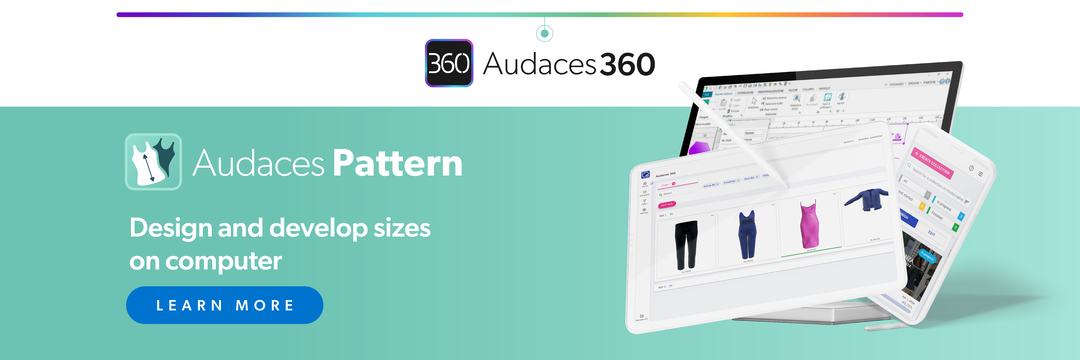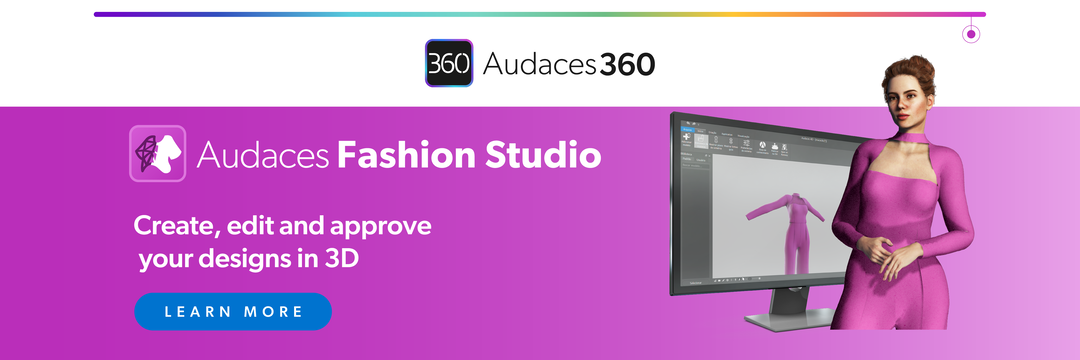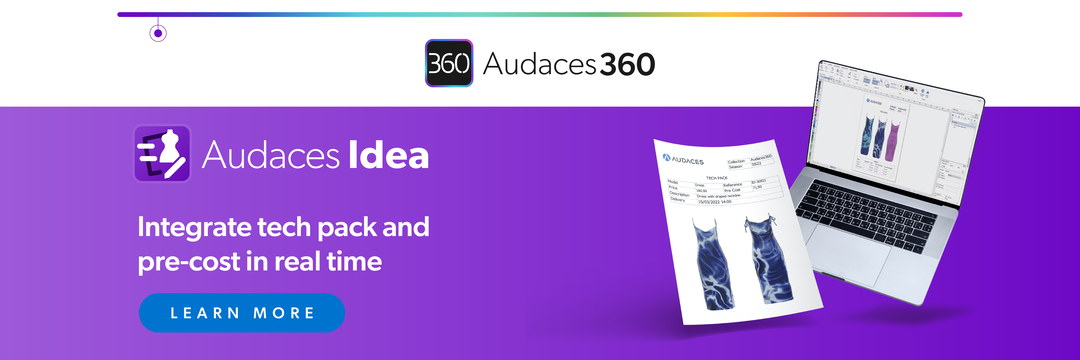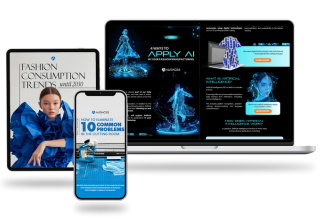Summary
- Wearable technology is changing the way people dress, move, and connect with the world.
- Innovation like smartwatches and clothing that tracks the body are making this market grow fast.
- Experience the future of the fashion industry with Audaces360. Start your free trial today!
For fashion designers, wearable devices and clothes can mean a new world full of ideas. It mixes style with technology and invites you to think beyond fabric and colors.
The best part is that you don’t need to be a tech expert to start. All you need is curiosity and an open mind. The possibilities go far beyond what you might expect, and it all starts with understanding how the market works.
This article will help you walk you through the basics. You’ll discover what wearable tech really means, learn why it matters, and how it fits into the fashion world.
Happy reading!
Sumário
What is wearable technology?
Wearable technology is any device or material you can wear on your body. These items usually have electronic parts and can connect to the internet or other devices. Their functions include collecting data, giving feedback, or helping with daily tasks.
One common example is the smartwatch. It looks like a normal watch but can track your steps, show your messages, or check your health information. Other examples include smart glasses, fitness bands, and even clothing with built-in sensors.
These products are comfortable and useful. Some look like regular fashion items, while others are more sporty or techy. Designers create them to fit into daily life without getting in the way.
However, wearable tech is not just for fun. It can help people take care of their health, stay safe, or be more productive. Some items can even alert users in case of a problem, like an irregular heartbeat or a fall.
In fashion, wearable tech opens a world of ideas. Designers can now think about clothes that change, react, or connect. It’s a mix of beauty, function, and smart design.
Wearable technology is already part of many people’s lives. And it’s just the beginning. As it grows, it creates more chances to blend style with innovation.
Learn more: Explore the fashion future demands and anticipate what’s next in the market
When did wearable tech first appear?
Wearable tech may feel new, but it started a long time ago. One of the first examples was in the 1960s. Back then, inventors created small devices to help with things like cheating at casino games or doing math faster. These were simple, but they showed what was possible.
In the 1980s and 1990s, we started seeing more tech you could wear. Digital watches with calculators were popular. Some companies even tried to mix glasses with sound or video. Still, these ideas were just the beginning.
The real change came in the 2000s. Mobile devices became smaller and smarter. At the same time, wireless internet got better. This made it easier to build tech into things we wear, like watches, glasses, and clothes.
Over time, device features also improved. Now, many wearable items can track movement, show notifications, and even help with health and safety. As the tech got better, more people wanted to use it in everyday life.
Learn more: Find out how futuristic fashion is revolutionizing the industry with technology
How big is the wearable tech market?
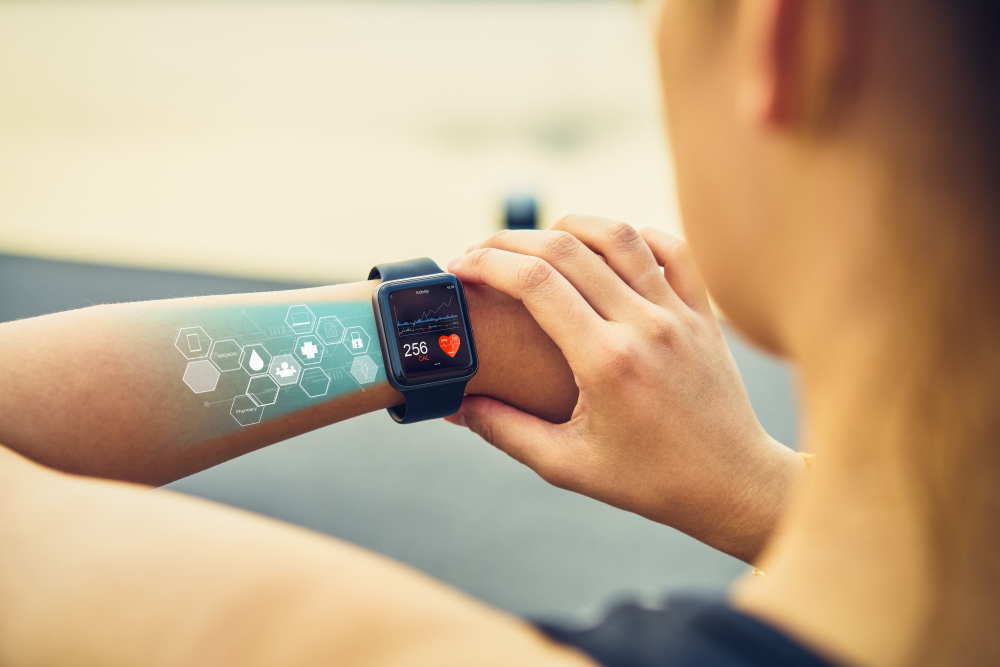
The wearable tech market is growing fast. More people want devices that help with health, fitness, and daily tasks. These products are no longer just for tech lovers—they’re for everyone.
The fitness tracker market is one of the fastest growing out there. In 2024, its value reached a massive 62.03 billion dollars. And it’s still rising!
By 2025, experts say the market will grow to 72.08 billion dollars. But that’s not all. By 2032, the market could reach 290.85 billion dollars. That’s more than four times the size it is today.
Learn more: Why augmented reality in fashion is a smart business move?
How technology connects with the human body?
Technology can work in many ways with the human body. Some devices stay outside the body, while others are worn or even stay inside it. Each type has a different level of interaction.
The goal is always the same: to improve life.
Portable (outside the body)
Portable technology is not worn, but it stays close to you. It can be in your bag, pocket, or hand. These devices are easy to carry and use wherever you go.
A smartphone is a good example. It’s a mobile device that helps you stay connected. Other examples include tablets, cameras, and small health monitors that are not so close to the body.
Wearable (worn on the body)
Wearable technology goes directly on the body. It can be clothing, accessories, or special gear with built-in tech. These items stay close to the skin and follow your movements.
Designers develop them to be light, safe, and easy to wear. You can use them all day without even noticing them.
Interactive
Interactive wearables respond to your touch or movement. They can vibrate, light up, or change based on what you do. For example, some bracelets light up during events to match music or show messages.
They have applications in entertainment, fitness, or events. They make the user part of the experience by reacting in real time.
Smart
Smart wearables do more than react. They collect data and make choices based on that data. A smartwatch, for example, can track your heart rate, send alerts, or suggest actions.
Smart wearables are common in fitness, health, and work. They help users understand their bodies and make better decisions.
Implantable (inside the body)
Implantable technology goes one step further. It stays inside the body through surgery. These devices stay under the skin or in the body and work all the time.
They are not fashion items, but they show how powerful tech can be. Many are useful for medical purposes. For example, a pacemaker helps control the heartbeat.
These devices must be very safe and last a long time. Specialists design them to work without the user doing anything. In the future, these implants may help people move, hear, or even see better.
From start to finish in your fashion and tech endeavors, Audaces has you covered. Explore how our all-in-one platform can elevate every stage of your creative journey!
Examples of wearable tech you should know
From watches to shoes, there are many smart items made to help, inform, or support you in simple ways. Let’s look at some of the most popular types!
Smartwatches
Smartwatches are one of the most famous wearable devices. They look like regular watches but do much more.
These devices can check your heart rate, count your steps, and show your messages. You can also use them to listen to music, track sleep, or get alerts from your phone.
Smart clothing
Smart clothing is an exciting new area in wearable tech. These are clothes with built-in sensors or special fabrics that can collect information.
Some smart clothes track body temperature, muscle activity, or posture. Others change color or shape based on the environment.
This kind of clothing is useful for sports, health, or even fashion shows. It mixes design with function in a creative way.
Learn more: Discover 5 major benefits of 3D simulation for fashion
Smart glasses
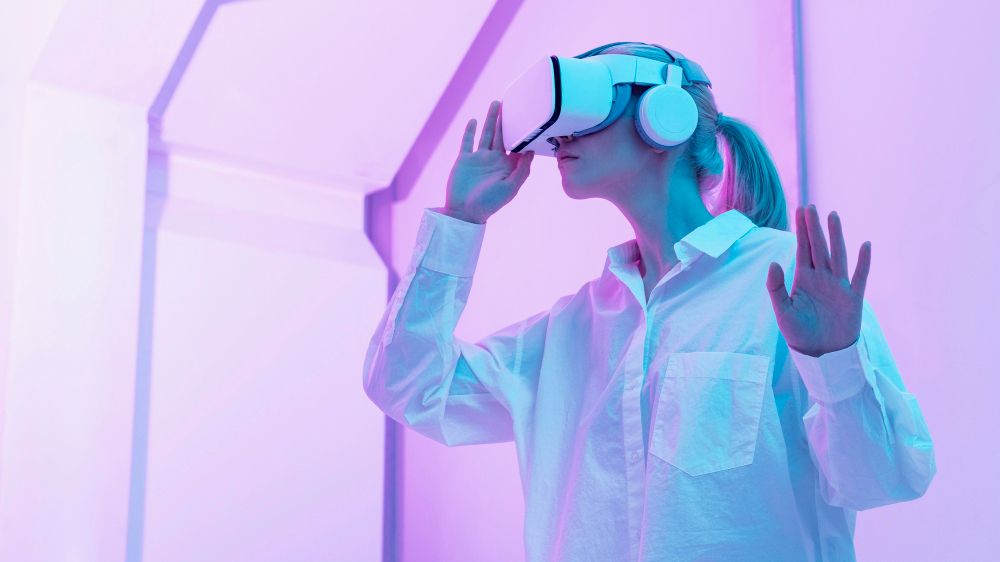
Smart glasses look like normal glasses, but they show digital information. They can display texts, maps, or images right in front of your eyes.
You don’t need to use your hands to control them, many respond to voice commands or touch. Some even include cameras or help people with vision problems.
Smart glasses are still growing, but they already offer new ways to see and interact with the world.
Learn more: Discover the fashion metaverse and make your collection stand out
Health bands and bracelets
Health bands are small, light, and easy to wear on the wrist. Most can count steps, track sleep, or measure heart rate. Meanwhile, some can even check blood oxygen levels or stress.
These bands help users learn more about their body and build better habits. They are popular in gyms, workplaces, and homes.
Smart shoes
Smart shoes have tech hidden in the soles or fabric. They can track your steps, running speed, or balance. Some models even adjust themselves to fit better.
These shoes are great for sports, training, or helping people with movement problems.
Smart accessories
Smart accessories are becoming more advanced, and earrings are now part of this trend.
Researchers at the University of Washington have developed the “Thermal Earring”. It’s a wireless wearable that monitors a user’s earlobe temperature.
This smart earring is about the size and weight of a small paperclip and boasts a 28-day battery life. It attaches to the earlobe with a magnetic clip and includes a second sensor. This hangs slightly below to measure room temperature, ensuring accurate readings.
This innovation highlights how wearable tech can blend seamlessly with fashion, offering both style and health monitoring capabilities.
Learn more: How can smarter sketching optimize fashion designers’ work?
Which brands are already working with wearable technology?
- Fitbit: Now owned by Google, Fitbit offers health bands and smartwatches made for fitness tracking. Their devices help users monitor steps, sleep, heart rate, and more.
- Garmin: It’s famous for its GPS tech and sports wearables. Many athletes and outdoor lovers use Garmin for training, navigation, and performance data.
- Google: The giant tech company is developing smart glasses and other wearable projects. It also supports Android Wear, the system used in many smartwatches from different brands.
- Oura: The brand makes a smart ring that tracks sleep, temperature, and activity. It’s small, stylish, and used by people who want deep health insights without wearing a watch.
- Levi’s + Google (Jacquard): This partnership brought tech into fashion with smart jackets. These jackets allow users to control music or calls with a touch on the fabric.
Why should you stay updated on wearable tech trends?
Wearable tech is growing fast. New ideas and tools appear every year. If you want to create, design, or sell fashion, it’s important to know what’s coming. By staying updated, you can understand what people want.
Many users are looking for products that do more than look good. They want smart features that make life easier.
Knowing the trends also helps you stay ahead. You can design better items, find new markets, and offer more value.
Learn more: Decode dressing trends and how to apply them to your designs
How can fashion and technology solve problems together?
Fashion and technology are a strong team. Together, they can solve real problems in health, comfort, and daily life.
For example, smart fabrics can control temperature or track the body. That helps people stay warm or cool, or even manage health better.
Tech can also support people with disabilities. Clothing with sensors or voice commands can help them move, communicate, or feel safe. At the same time, fashion adds beauty and style.
It has the power to make technology more personal and more fun to use!
Use technology to boost your creations with Audaces360
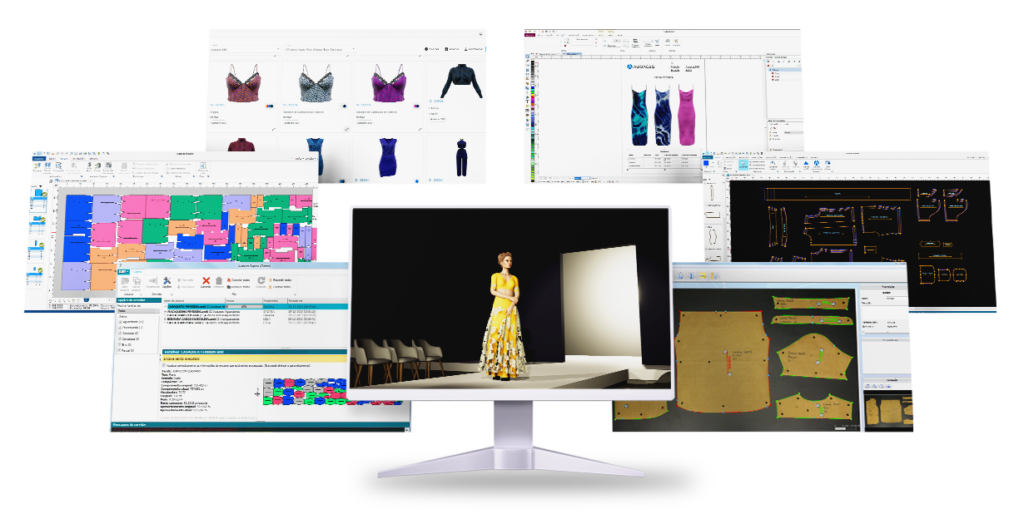
Audaces360 integrates cutting-edge digital innovations to optimize workflows in the textile and apparel industry.
It caters to companies of all sizes and types, offering the flexibility to scale with your business needs.
All solutions were carefully developed to address the specific challenges of the field. They streamline the design and production processes, saving valuable time and resources.
The platform boasts a comprehensive range of functionalities, including pattern making, marking, collection management, vector drawing, and 3D creation.
In addition, a fashion Artificial Intelligence to assist you along the way.
Discover Audaces360 and unlock a world of possibilities for fashion design and production. Explore our comprehensive suite of solutions today!
FAQ
Wearable technology is any device or material you can wear on your body. These items usually have electronic parts and can connect to the internet or other devices. Their functions include collecting data, giving feedback, or helping with daily tasks.
Smartwatches, smart clothing, smart glasses, health bands and bracelets, smart shoes, and smart accessories.
Fitbit, Garmin, Google, Oura, Levi’s Jacquard, among others.


